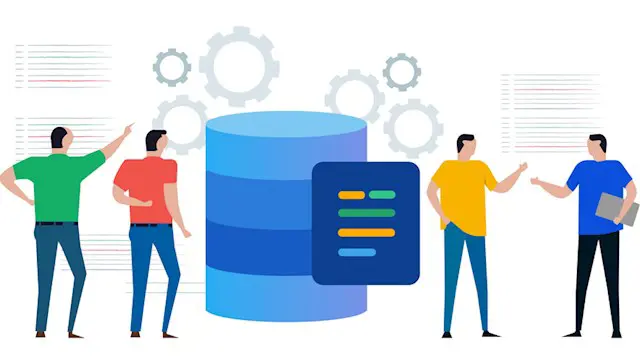
Learning Database Online Training
4 Courses Bundle | Free eCertificate | Tutor Support | Video Lessons
Frontier Education
Summary
- Reed courses certificate of completion - Free
- Tutor is available to students
Add to basket or enquire
Overview
This Learning Database course enables you to delve deeply into database, to better explore, understand and apply relevant skills.
Through this Learning Database course, you will gain a world-class knowledge and understanding with a focus on the Learning Database, based on solving real-life issues.
This Learning Database course includes a whole host of practical tips and advice, helping you to develop your database skills to become the data analyst, data engineer, web designer, researcher, web designer, or related profession you can be.
This is three courses bundle and they are:
Course 1:Microsoft Access Volume 1 - Tables and Queries
Course 2:Access Databases Volume2 - Forms and Reports
Course 3:ESP32 + Databases to Control Anything Anywhere
Course 4:The Complete MS SQL
Packed with videos, PDFs and exercises, it'll equip you with what it takes to be successful in today’s business landscape, covering a broad range of topics, including lookup wizard, creating and managing table relationships, sort and filtering a table, query wizards and much more.
Frontier Education provides those with no previous experience or working professionals with trailblazing, practice-based teaching, aimed to inspire and prepare you for a career in Learning Database.
Curriculum
Course media
Description
In this Learning Database course, you will learn and understand the core theories and practices in Learning Database, developing a solid base of knowledge. You will understand core Learning Database theories and practices and be able to think critically, actively contributing towards the body of knowledge in the industry and pushing the boundaries with Learning Database skills.
With expert guidance and a combination of videos, PDFs, and worksheets, this course is designed to prepare you for a career or learning journey.
Course curriculum:
Course 1: Microsoft Access Volume 1 - Tables and Queries
Access Tables and Queries - 1 - Tour of the screen
Access Tables and Queries - 2 - Using Design view to create…and edit tables
Access Tables and Queries - 3 - Using the lookup wizard
Access Tables and Queries - 4 - Importing data from Other…es into Access
Access Tables and Queries - 5 - Linking Tables from Other …es into Access
Access Tables and Queries - 6 - Exporting data from Access…er data types
Access Tables and Queries - 7 - Creating and Managing Tab… Relationships
Access Tables and Queries - 8 - Database Tools
Access Tables and Queries - 9 - Sort and Filter a Table
Access Tables and Queries - 10 - Basic Queries
Access Tables and Queries - 11 - Prompting the user for the criteria
Access Tables and Queries - 12 - Creating Calculated Fields in a Query
Access Tables and Queries - 13 -Creating Totals Queries
Access Tables and Queries - 14 - Multiple table Queries
Access Tables and Queries - 15 - Viewing the SQL code for … Access Query
Access Tables and Queries - 16 - Using the Query Wizards
Access Tables and Queries - 17 - Creating Subqueries
Access Tables and Queries - 18 - Creating Make Table, App…elite Queries
Access Tables and Queries - 19 - Displaying a certain number of records
Course 2: Access Databases Volume2 - Forms and Reports
Course 3: ESP32 + Databases to Control Anything Anywhere
Course 4: The Complete MS SQL
You’ll also be able to access several exclusive bonus resources to help you along your Learning Database journey, including:
- form wizard
- adding controls to your form
- select statement and distinct
- join and union
- update
Top reasons to Study Online at Frontier Education
- Tailor-made: Course adapted to market needs and interests
- Flexible programs: study and work at your own pace on easy-to-use web platforms
- Online education: progressive teaching methods with video or easy to understanding the medium
- Multicultural: connect with classmates from all corners of the globe
Who is this course for?
This Learning Database is ideal for people looking to progress their career into a data analyst, for those who want to become data engineers, as well as looking to further develop their skills and knowledge.
Requirements
No prior knowledge or experience required
Questions and answers
Currently there are no Q&As for this course. Be the first to ask a question.
Certificates
Reed courses certificate of completion
Digital certificate - Included
Will be downloadable when all lectures have been completed
Reviews
Currently there are no reviews for this course. Be the first to leave a review.
Legal information
This course is advertised on reed.co.uk by the Course Provider, whose terms and conditions apply. Purchases are made directly from the Course Provider, and as such, content and materials are supplied by the Course Provider directly. Reed is acting as agent and not reseller in relation to this course. Reed's only responsibility is to facilitate your payment for the course. It is your responsibility to review and agree to the Course Provider's terms and conditions and satisfy yourself as to the suitability of the course you intend to purchase. Reed will not have any responsibility for the content of the course and/or associated materials.


